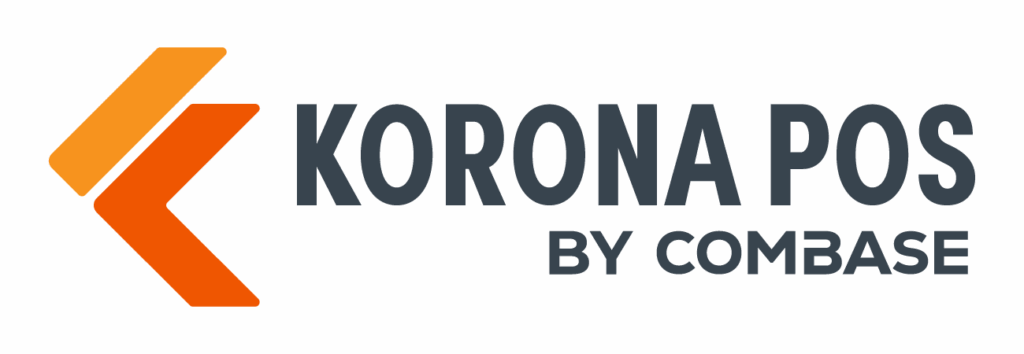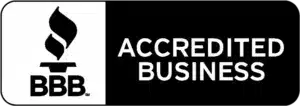This guide will give a brief description of each individual navigation item in KORONA Studio.
Please be aware that some navigation items are only available with certain add-on packages.
Main Navigation Items:
- Dashboard
- Inventory
- Hospitality
- Ticketing
- Sales
- Employees
- Evaluations
- Settings
Every main navigation item has sub-navigation items except the dashboard. You can see and select the sub-navigation item by clicking on the main navigation item.
Dashboard
The dashboard is your front page. It can be customized to your needs and provides quick insight and access to your most important business aspects.
Inventory
You will only be able to see this navigation if you have the retail package. It provides all aspects of inventory control and product management.
- Products – This will take you to your product database, where you can search and edit products you sell. You can find a detailed guide here: Creating Products.
- Order Requests – Order requests can be generated by your cashiers to let you know what should be ordered.
- Order Cycles – Order cycles can help you automate your ordering workflows. They are especially useful for businesses that order similar quantities on a daily, weekly or monthly basis: Order Cycles.
- Stock Orders – This is where you create and review purchase orders for all your stores: Stock Orders.
- Order Templates – If you are placing similar orders frequently or you have to place the same order for multiple locations, you can use order templates. These can be used later to create actual stock orders: Stock Orders.
- Inventories – This navigation item takes you to your inventory count procedures. Within the inventory count process, you will find count sheets which can be generated automatically by KORONA POS or compiled manually: Inventory.
- Warehouses – Warehouses are organizational units that contain inventory. This navigation item will take you to the list of warehouses and their inventory assets: Warehouse.
- Suppliers – Manage your suppliers/vendors: Suppliers.
- Dispatch Notification – Dispatch notifications allow you to let the system know what the supplier actually sent out: Dispatch Notifications.
- Stock Receipts – Stock receipts are used to receive inventory and keep track of inventory cost: Stock Orders and Stock Receipts.
- Commodity Groups – Commodity groups are used to categorize your products. You can find a detailed guide here: Commodity Group Setup.
- Customer Orders – This will launch the customer order page where you can create new customer orders or find your previously created customer orders: Customer Orders.
Hospitality
The hospitality section is only available with the hospitality package and is mainly used for restaurant environments.
- Products – This will take you to your product database, where you can search and edit products you sell. You can find a detailed guide here: Creating Products.
- Item Sequences – Item sequences can be used to categorize items on a receipt. In most hospitality environments this would be used for courses: Item Sequence Creation and Assignment.
- Table Overviews – Here you can manage table layouts for all your locations: Table Overview Location and Assignment.
- Commodity Groups – Commodity groups are used to categorize your products. You can find a detailed guide here: Commodity Group Setup.
Ticketing
The Ticketing section is only available with the Ticketing package.
- Products – This will take you to your product database where you can search and edit products you sell. You can find a detailed guide here: Creating Products.
- Events – Here you can configure the events for which you sell tickets. Events have a set time and are usually limited. This is the legacy events system, so refer to this page on the new events setup: Events Creation.
- Ticket Definitions – Ticket definitions are used for general admission. They define your different ticket types, such as day passes, season passes, or one-time entries: Creating a Ticket and Ticket Definition.
- Commodity Groups – Commodity groups are used to categorize your products. You can find a detailed guide here: Commodity Group Setup.
- Entry Gates – Entry gates represent entry points to different locations that require ticket checks: Entry Gate Setup.
Sales
- Promotions – Promotions are used for special discounts and coupons: Creating Promotions.
- Receipts – Here you can search and review individual sales receipts: Receipts.
- Info Texts – Info texts can be used for item information, popup info messages or receipt information: Info Text.
- Balance Statements – Balance statements are the individual cashier and POS balance statements for each POS: Balance Statements.
- Points of Sale – Here you can manage your point sale terminals and adjust their configurations: Point of Sales.
- Customers – Here you can find your customer database. You can search, edit or add customers through the database or at the point of sale: Customers.
- Price Groups – Price groups are used to allow multiple price levels for multiple stores or special customer groups: Creating and Assigning Price Groups.
- Price Rules – Price rules are much simpler compared to promotions and allow you to quickly create discount rules: Price Rules.
- Assortments – Assortments are used to categorize products based on their availability. You can find out more about how to use assortments here: Create Assortments.
- End-of-Day Statements – End-of-day statements are generated by the point of sale and represent a summary of the day. Another common term is z-tape: Finish Day/ End-of-Day Statements.
Employees
- Users – Users have access to the back office. Each user can be equipped with different back-office permissions, which are defined in user roles: Users.
- User Roles – User roles define user permissions: User Roles.
- Cashiers – Cashiers have access to the point of sale but do not have access to the back office. You can find out more about cashiers here: Create Cashiers.
- Cashier Roles – Cashier roles define cashier permissions: Manage Cashier Roles and Permissions.
- Time Tracking Entities – Time tracking entities represent different time clock options such as clock-in or clock-out: Time Tracking Entries.
Evaluations
In this section, you will find a large number of reports. You can find the list of available reports here.
Settings
- Receipt Layouts – Receipt layouts provide customization options for your receipts. Here, you can set up header and footer logos as well as many other settings that affect the appearance of your receipts.
- Data Exchange – Here, you can export and import data and configure connections with other applications such as QuickBooks Online.
- Dialects / Languages – Here you can manage multiple languages for your system.
- Production Types – Production types are used for special tasks that have to be performed when an item is sold. This can be a kitchen print, gift card activation, or ticket print.
- POS Profiles – Here you can manage POS settings such as general behavior or peripherals.
- Accounts – Accounts are similar to products, but they are not counted as revenue. hey are simply used to track money movements such as cash drops or opening cash.
- Customer Groups – Customer groups are used to track your revenue by the type of customer They can also trigger promotions and price rules. You even have the option to assign specific price groups to customer groups.
- Organizational Units – Organizational units represent divisions of your organization. This can be categorized as stores, warehouses, or even areas. Just like commodity groups, organizational units can be nested.
- Tags – Tags are a very powerful tool for categorizing and grouping products for promotions and evaluations.
- Sectors – Sectors are used to categorize your products financially, mainly for taxes but also for revenue allocation accounts.
- Taxes – Here you can set up your tax rates, which you can later assign to specific sectors.
- Button Configurations – This is where you can customize your point of sale buttons.
- Revenue Allocation Accounts – Revenue allocation accounts are used to assign certain percentages of your revenue. This can be used for franchise royalties or to determine your marketing budget based on revenue.
- Economic Zones – Economic zones represent areas for taxation. If you have two stores in two different states, you will need two economic zones representing the two areas where you collect sales tax.
- Currencies – Here you can manage additional currencies you accept.
- Payment Methods – Here you can manage all types of payments you accept. Examples are cash, credit, debit, on-account, or gift card.


